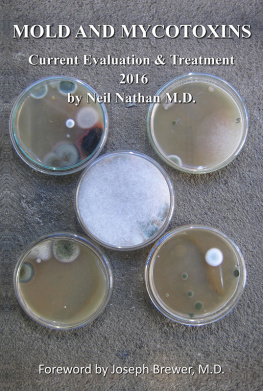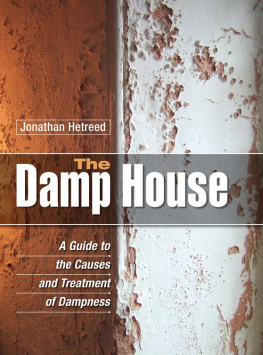
Copyright
First published in 2008 by
The Crowood Press Ltd,
Ramsbury, Marlborough,
Wiltshire, SN8 2HR
www.crowood.com
This e-book edition first published in 2012
Jonathan Hetreed 2008
All rights reserved. This e-book is copyright material and must not be copied, reproduced, transferred, distributed, leased, licensed or publicly performed or used in any way except as specifically permitted in writing by the publishers, as allowed under the terms and conditions under which it was purchased or as strictly permitted by applicable copyright law. Any unauthorised distribution or use of this text may be a direct infringement of the authors and publishers rights, and those responsible may be liable in law accordingly.
ISBN 978 1 84797 403 7
Disclaimer
The author and publisher do not accept responsibility or liability in any manner whatsoever for any omission, nor any loss, damage, injury, or adverse outcome of any kind incurred as a result of the use of the information contained in this book, or reliance upon it. Readers are advised to seek professional advice relating to their particular property and circumstances before beginning any damp treatment or any form of remedial building work.
Photo Credits
Front and back cover photographs and Figs 81, 100, 101, and 142 by Shelagh Hetreed.
Figs 15, 25, 79, 147 and 148 by Andrew Smith of Peter Cox Property Services.
Fig. 92 by Martine Hamilton-Knight of MHK Photography.
121 and 125 by Passivent Ltd.
All other photographs are by the author.
Contents
Introduction and Acknowledgements
Dampness is the stuff of life: without it our land-world would be dead but, like weeds often beautiful plants simply growing in the wrong place dampness becomes an enemy when it invades our interior space, when it persists, spreads and damages the finishes, fittings and contents of our homes. In some cases, it can encourage the growth of moulds that threaten our health, as well as stimulating fungus and decay in the structure of a house. It is one of the commonest problems noted by surveyors assessing houses for sale and frequently, its eradication is a condition for buyers obtaining mortgages.
A major industry has developed offering damp treatments to home owners, many of them with guarantees though these are often short-lived and beset with conditions but specialist contractors often concentrate on a single treatment rather than offering a comprehensive diagnosis. The aim of this book is to provide clear information to general readers and to present them with an overview of the types and causes of dampness, as well as to indicate the range of treatments and remedies.
Since no two individual circumstances are the same, no book can provide all the answers and there is no substitute for experienced, expert diagnosis and advice. However, clear explanations of the symptoms, causes and mechanisms of dampness, as well as descriptions of the methods used to combat it, should help readers to understand and solve simple problems themselves, as well as to evaluate various solutions offered to them by professionals.
ACKNOWLEDGEMENTS
There are so many to thank for a career in architecture that involves constant learning from ones own and others experience.
Clive Gaynard of Timsbury Preservation has taught me more about the practicalities of damp treatment over 27 years than anyone else, and always with an honesty and wit that has maintained my faith in the industry even when others sorely tried it!
My former colleagues at Feilden Clegg and my current colleagues at Hetreed Ross, along with so many contractors and specialists, building control officers and conservationists, have contributed immensely to the experience from which this book has been gleaned.
Published material used in my research appears in the list of Further Reading at the end of the book: the Building Research Establishment has been an invaluable source of theoretical and practical material.
There have been detailed contributions from many others to my research for the book, and to the photographs included. I would particularly like to thank: Wraxall Builders; Bath and NE Somerset Building Control; Aaron Roofing; the Mastic Asphalt Council; Peter Cox Property Services; Timber Decay Treatment; Permagard Products; Cotswold Treatments; Leo Wood, master thatcher; Roofkrete; Gledhill Water Storage; Hepworth Building Products; Passivent; Wessex Water.
Thanks are due to The Crowood Press for sound advice, patience and sympathy. I would also thank Shelagh, Lisa and Kelly for putting up with my too frequent neglect of them while I wrote the book.
DEDICATION
To my father, Dr Bill Hetreed, whose lifelong enthusiasm for both the theories and the messy practicalities of making things had much to do with my becoming an architect and enjoyer of building.
CHAPTER 1
Definitions and Diagnosis
The causes of dampness are often difficult to diagnose, sometimes because the problems are hidden, though the symptoms may be all too visible, and sometimes because there are several causes acting simultaneously. Neglected houses are likely to have suffered from lack of maintenance in many ways; misguided or inexpert attempts to cure dampness often fail and sometimes make matters worse, or, by concealing the symptoms, make diagnosis more difficult. Before discussing diagnosis in more detail, it will be useful to establish some clear definitions.

Fig 1 Rising damp uses walls as wicks.
RISING DAMP
This is the classic form of damp that most people mean when they think of a damp house. As the term implies, it consists of moisture from the ground rising in porous wall construction by means of capillary action, in the same way that oil rises in the wick of an oil lamp, but in buildings the wall is the wick and the moisture in the ground is the oil. Classic visual signs are the tide mark of damp staining or decayed finishes, often reaching to around a metre above local external ground levels.

Fig 2 Penetrating damp every external component is vulnerable.
PENETRATING DAMP
This consists of moisture usually rain, occasionally floods penetrating the interior of the house from the outside, under wind or gravity. There are many parts to the envelope or external skin of a house roofs, walls, windows, doors, chimneys and so on each of which have their own sets of components (for example, in the tiles, slates, flashings, copings, ridges of roofs) and each of these components has its own role to play in keeping out the weather. Consequently, damage, deterioration or dislodging of even individual components can lead to damp penetration or a full-scale leak, though such is the complexity of construction, particularly modern or modernized construction with its multiple layers, that the symptoms may not necessarily appear where they are expected.
The visual signs of penetrating damp may well seem similar to those of rising damp but they usually relate more specifically to local sources and will, therefore, vary markedly around the house; for example, a sheltered wall may appear dry, whereas one fully exposed to driving rain from the prevailing westerly wind may be seriously affected, or even more specifically, a spreading vertical damp patch that is worst at the top of a wall may relate to a leaking rainwater pipe or broken gutter.

Next page











